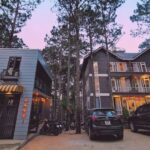Public Notification: Golden Ant Tablets, Golden Ant Inc Company Profile
Golden carpenter ants or Camponotus sericeiventris are members of the Arthropod phylum, which is the scientific name for animals like insects, spiders and lobsters. They are also members of the Formicidae family, which is the scientific name for ants.
Golden carpenter ants are 1/2 inch long ants that live in colonies in the tropical rainforests of Central and South America. Most ants dig “ant hill” colonies in the dirt but golden carpenter ants dig their nests in the wood of dead trees or soft-wood living trees. They use their strong serrated mandibles (jaws) to burrow into the wood, building tunnels and rooms for storing food and raising larva (their babies).
Golden carpenter ants also use these strong mandibles as weapons against their enemies. When threatened or when hunting, the ants bite their enemy with their mandibles to make a wound. Then they move their abdomen over the wound to spray formic acid into it. This corrosive acid burns into the wound, causing extra pain and damage to the enemy.
Đang xem: Golden ant tablets
Golden carpenter ants main method of defense is the fact that they work together. Their secondary defense is that they have quite a thick armor. Along with their allies (the other ants in their colony), they are able to defend the nest, hunt and gather food cooperatively. Where one ant would barely be a minor pest to a large enemy, an entire group of the ants can do enough damage to drive it away or even kill it. Despite their strong defenses, there are animals that eat golden carpenter ants – their main predators are birds and ant eaters.
One of the most fascinating things about golden carpenter ants is that they are farmers! They look after “herds” of aphids — not to eat them, but to eat the sweet excretions the aphids leave behind when they eat leaves. Farming is a bit of a sideline for the ants — their main food sources are collecting seeds, scavenging dead animals and hunting other insects.

Golden Carpenter Ant Summary:
Scientific name (genus and species): Camponotus sericeiventris Phylum: Arthropod Class: Insects Size: 1/2 inch Habitat: nest in living and dead trees in the tropical rainforests of Central and South America Food: care for farms of aphids; collect seeds; scavenge dead animals; hunt other insects Weapons: strong mandibles (jaws); spray formic acid from their back end Defenses: thick armor; travel with groups of allies Predators: birds; ant eaters

Facts Card Printable Template:
(color)
or
(B&W)
Scientific Classification:
Kingdom: Animalia (Animals)
Phylum: Arthropoda (Arthropods – insects, crustaceans and spiders)
Subphylum: Hexapoda (Hexapods – arthropods with 6 legs)
Class: Insecta (Insects)
Order: Hymenoptera (Sawflies, wasps, bees and ants)
Family: Formicidae (Ants)
Genus: Camponotus (Carpenter Ants)
Species: Sericeiventris (Golden Carpenter Ant)
Vocabulary Words:
Abdomen: The back end of the ant, it contains the ant's heart and stomach.
Antenna: An ant's two antennae are it's most important way of sensing the world around them — they use them to tap things and to smell. The antenna stick out from the head and the ant is able to move them around. The antenna have joints which allow the ants to bend them just like you would bend your finger using your finger joints.
Arthropod: Arthropods are an animal phylum that includes cold-blooded animals with segmented bodies, jointed legs and an exoskeleton. This class includes bugs like the ant and larger animals like the crab. Learn more about arthropods.
Colony: A group of ants that live and work cooperatively together. A colony has at least one queen ant, but can have more. Think of it like an “ant city”.
Exoskeleton: The hard outer shell of some animals, especially insects. Insects do not have bones inside of them, instead an ant has a hard shell that holds it together, helps it move and acts like armor against predators.
Xem thêm: mega mall thao dien
Formic Acid: An acid produced in the bodies of ants. It smells a little like vinegar and will cause pain when it comes into contact with a wound. Ants use their formic acid to defend themselves from predators and to help them when hunting prey. Formic acid is sprayed out of a specialized nozzle at the back end (abdomen) of ants.
Mandibles: Mandibles are the mouth parts of an ant, similar to jaws on people except that an ant's mandibles move horizontally (left to right) whereas people's jaws move up and down. Mandibles are used to defend the ant but are also used to grab and tear apart prey.
Nest: An ant nest is usually dug underground with a small mound of soil piled up around it — also known as an ant hill. However in the case of carpenter ants, nests are built in living or dead wood. An ant colony can be made up of many ant nests — just like a human city can have many apartment buildings.
Predators: Animals that are trying to kill and eat the ant. A carpenter ant's main predators are birds and ant eaters.
Prey: Animals that the ant is trying to kill and eat.
Xem thêm: Món Ăn Sáng Cho Bé 2 Tuổi Giàu Dinh Dưỡng, Cực Kỳ Dễ Nấu, 25 Ý Tưởng Ăn Sáng Lành Mạnh Cho Trẻ Em
Thorax: The middle part of the ant's body. This is where the six legs of an ant are connected to the body.






Bình luận